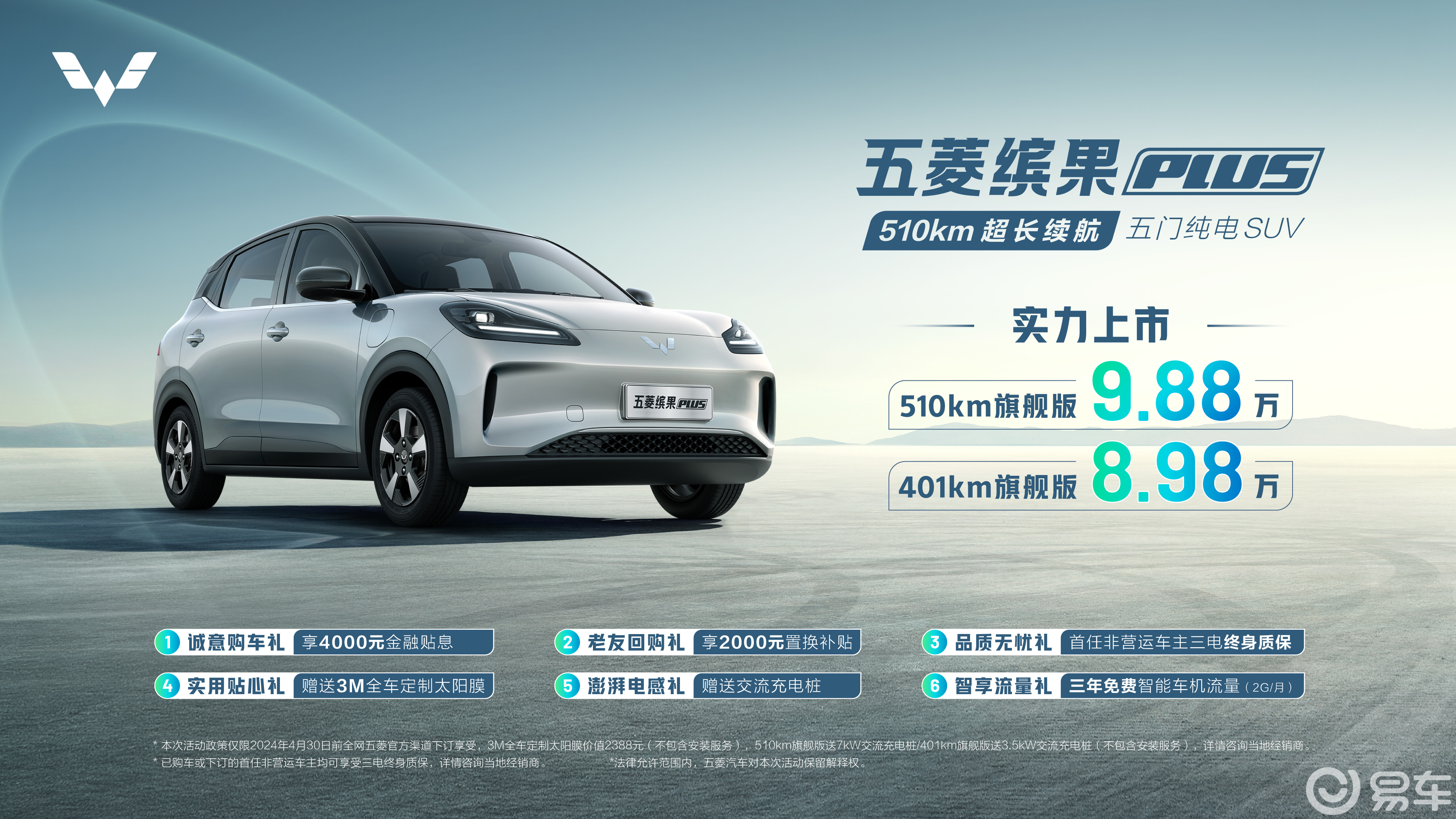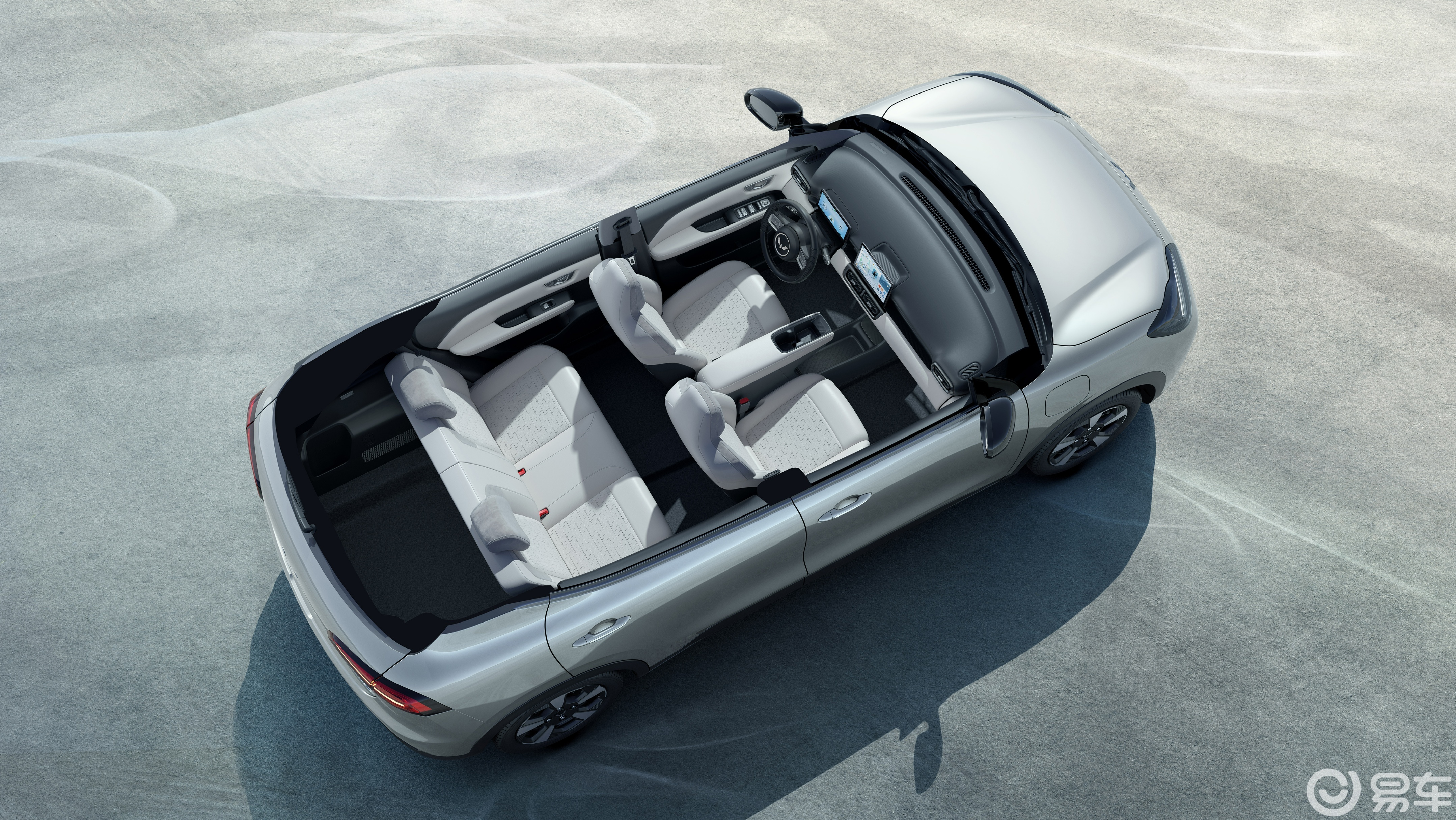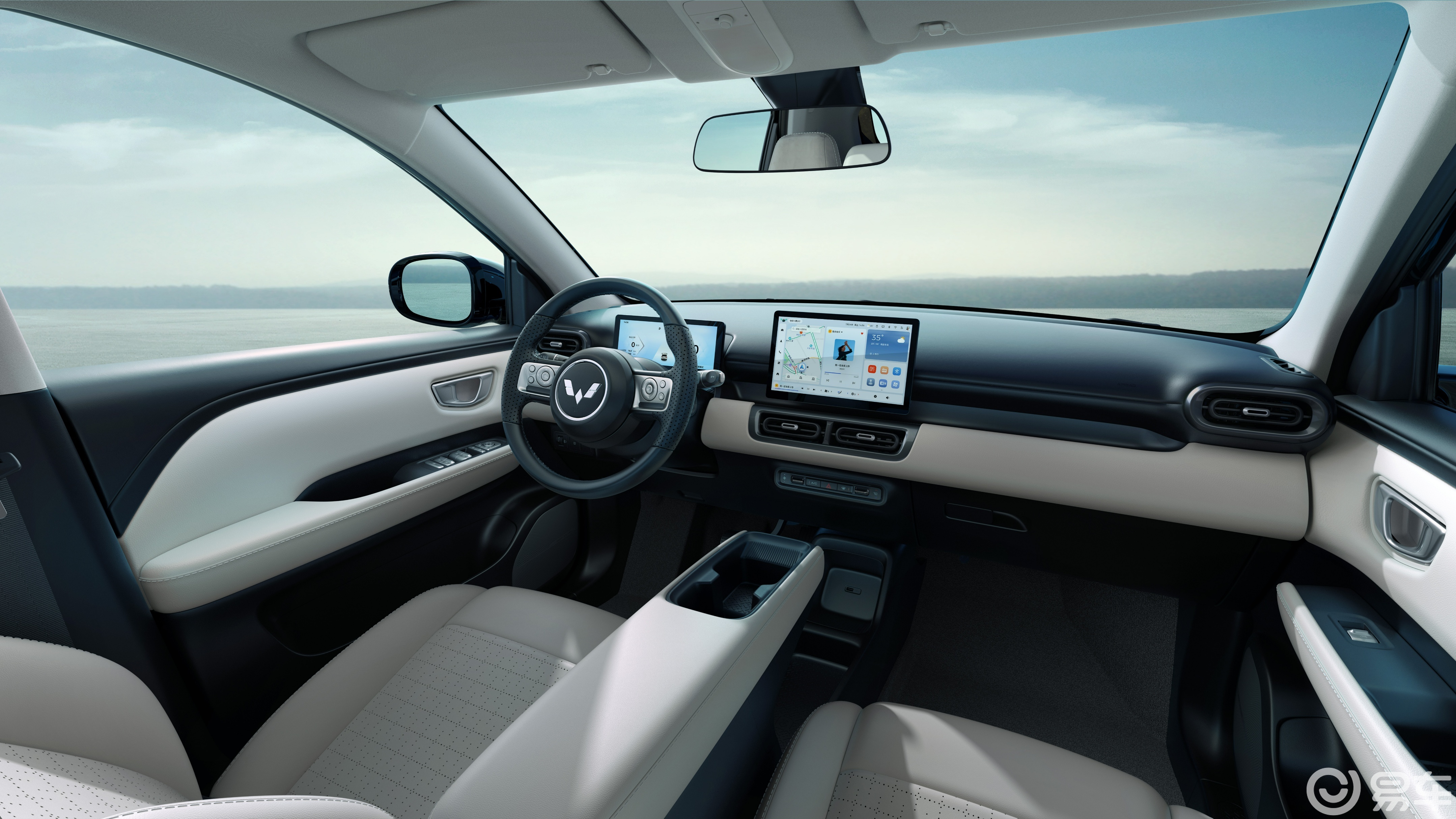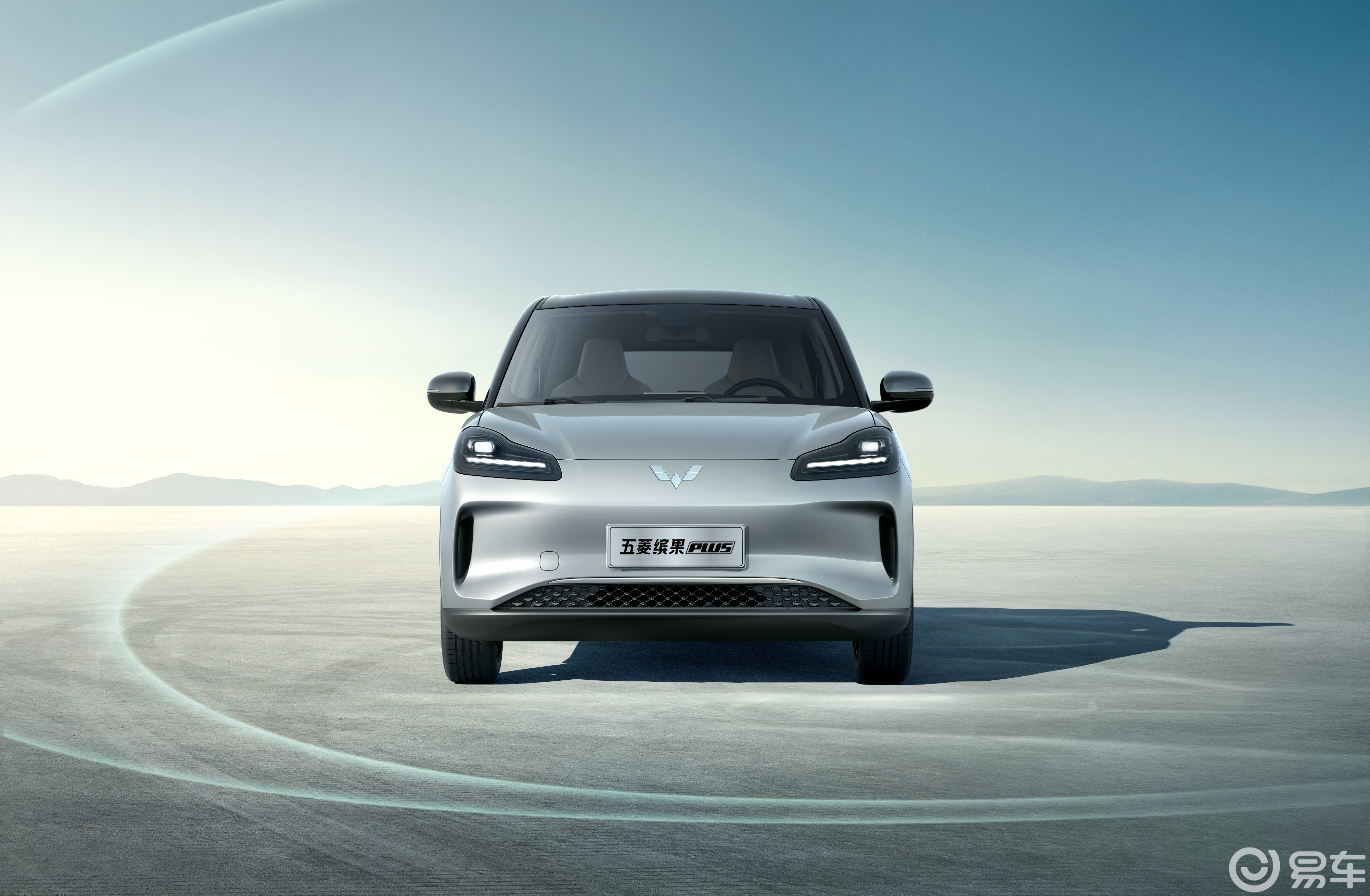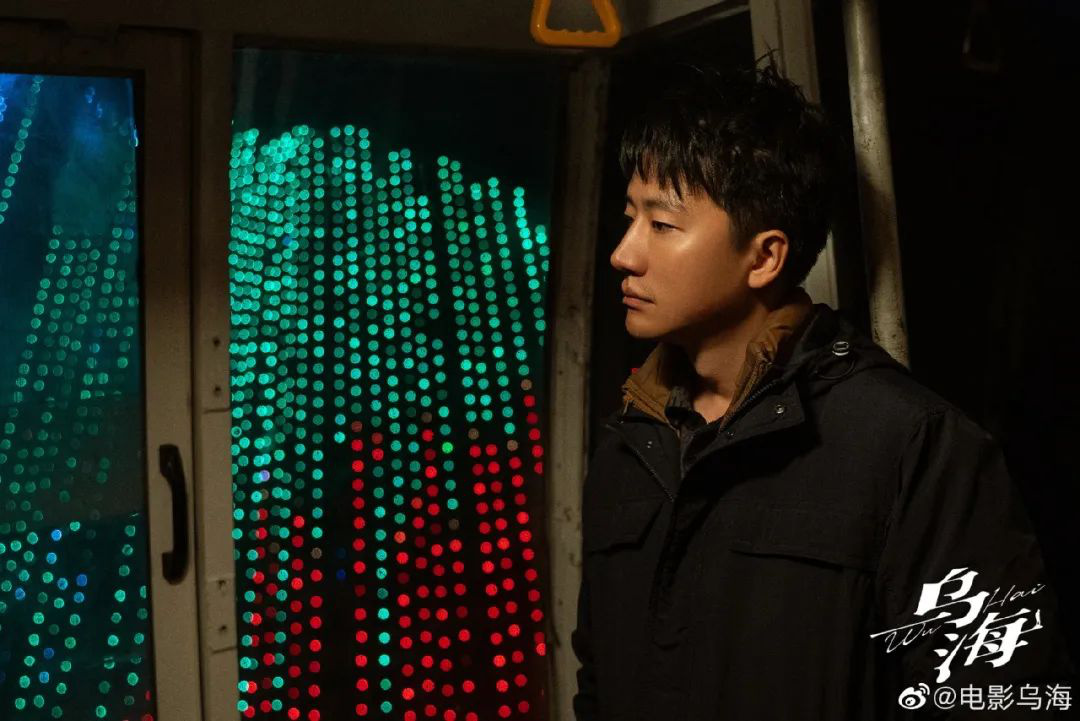In order to thoroughly implement the spirit of the important exposition of the Supreme Leader General Secretary on scientific and technological innovation, implement the work arrangements of the 14th, 15th and 16th plenary sessions of the 12th Provincial Party Committee, vigorously implement the innovation-driven development strategy, focus on the "three major articles", promote the development of high-tech industries, and comprehensively enhance the independent innovation capability of Anshan City, this plan is formulated in accordance with the Outline of the 14th Five-Year Plan for National Economic and Social Development of Anshan City. This plan is a programmatic document to guide the development of high-tech industries in Anshan at present and in the future. The implementation period is 2021-2025. At the same time, the long-term goal in 2035 is planned.
In recent years, the development of high-tech industry in Anshan has made gratifying achievements, which has made outstanding contributions to improving the economic development level of the whole city and supporting the medium and high-speed growth of the national economy. At present, Anshan City has possessed the basic conditions to move towards higher quality and higher level in the field of high-tech industries.
(1) The scale of high-tech industries has steadily increased.By the end of 2020, there were 360 high-tech enterprises in Anshan, ranking third in the province. There are 7 high-tech enterprises listed companies and 9 "New Third Board" listed. The technical field covers new materials, advanced manufacturing and automation, electronic information, new energy and energy conservation. According to statistics, in 2020, the total output value of high-tech products of industrial enterprises above designated size will reach 43.76 billion yuan, an increase of 14% over the previous year; The added value of high-tech products reached 10.08 billion yuan, an increase of 17.5%.
(2) Leading enterprises in science and technology are developing rapidly.As one of the top 500 enterprises in the world and the first batch of "innovative enterprises" in China, Angang Group Co., Ltd. ranks first in China in terms of heavy rail, ship plate, container plate, military steel and bridge steel, and is at the leading level in the world. Liaoning Fuan Heavy Industry Co., Ltd. introduced a team of Russian experts for technical support, and the GT-010M gas turbine independently developed has been put into production. Since 2016, Julong Co., Ltd. has obtained 29 authorized invention patents, 64 authorized utility model patents, 40 authorized design patents and 10 computer software copyrights, and its core technology has reached the international leading level. Anshan Senyuan Road and Bridge Co., Ltd. is the only road maintenance equipment manufacturer in China that can provide a full range of asphalt pavement in-situ recycling solutions and has experience in engineering construction and technical services. Liaoning Aihai Talc Co., Ltd. is the earliest and largest talc deep processing enterprise in China. Its products are exported to more than 20 countries and regions in the world, such as the United States, France, Italy, South Korea, Japan and Belgium, and it is in the forefront of talc industry in Asia. Rongxin Huike Electrical Technology Co., Ltd. is a global leading enterprise in manufacturing high-power power electronic equipment. Its products and technologies of large-capacity STATCOM (capacity 300MVar), flexible DC transmission converter valve (power 5000MW) and high-power high-voltage frequency conversion speed regulating device (power 86MW) are all at the international leading level, with the highest capacity in the world and core competitiveness in domestic and foreign markets.Xingkong Sodium Battery Co., Ltd., a subsidiary of Liaoning Hongcheng Electric Power Co., Ltd., is committed to the research and development of sodium ion batteries and sodium ion battery energy storage systems, and has passed the tests of national authorities. Magna Magnetic Power Co., Ltd. is a leader in permanent magnet application technology in China, with 82 domestic patents and many international patents, and an academician expert workstation. It is a provincial-level professional technology innovation center. Haicheng Sanxing Eco-agriculture Co., Ltd. is a trans-regional, cross-industry and export-oriented national key leading enterprise in agricultural industrialization and a leading scientific and technological enterprise in Liaoning Province. It has 41 vegetable varieties independently developed and filed, and is the largest, most dynamic and most efficient vegetable seedling factory in China at present.
(1) The level of industrial innovation platform has been continuously improved.Anshan High-tech Zone has become the power source and main force of scientific and technological innovation, personnel training and industrial incubation in the city, and has become the "locomotive" to promote the development of high-tech industries. Among the 169 high-tech zones in China, it ranked 45th in 2020, up 10 places from 2019, and ranked 3rd among 8 high-tech zones in the province. With Anshan High-tech Zone and Tengao Provincial High-tech Zone as the carriers, Anshan has three characteristic industrial bases: National Torch Anshan Laser Technology Characteristic Industrial Base, National Torch Anshan Flexible Power Transmission and Distribution and Metallurgical Automation Equipment Characteristic Industrial Base and National Torch Anshan Haicheng Fine Organic New Materials Characteristic Industrial Base. At the same time, the city has 1 national science and technology business incubator, 3 provincial science and technology business incubators, 5 provincial creative spaces, 1 national university science park, 1 national technology transfer institution, 5 provincial technology transfer demonstration institutions, 2 academician expert workstations and 17 expert workstations.
(2) A large number of scientific and technological innovations have emerged.In 2020, the number of patents granted in the city was 3,728, including 481 invention patents. There are 3,891 valid invention patents, and 10.95 valid invention patents per 10,000 people. In 2019, the city’s R&D investment was 1.86 billion yuan, accounting for 1.07% of GDP.
3.The industrial service mechanism continues.Innovation, continuous optimization of development environment
A series of policies and measures, such as "Several Policies on Implementing the Plan of Talents in Steel Capital" issued by Anshan City, have provided a solid policy guarantee for the vigorous development of high-tech industries. It has become a pilot city for the reform of enterprise investment project management system in Liaoning Province, initiated the reform of investment, trade, finance and business facilitation, and accelerated the construction of online approval and electronic monitoring system. Strive for all kinds of national talent plans and Liaoning Province’s "Revitalizing Liaoning Talents Plan". The system and mechanism of the development park have been further improved, and the reforms of administrative institutions, state-owned enterprises and public resources transaction management have been deepened. We have implemented fiscal and taxation reforms such as "reform of the camp" and implemented preferential tax policies for small and micro enterprises.
At present, a new round of scientific and technological revolution and industrial transformation are accelerating, and we are in an important opportunity period of comprehensive and all-round revitalization in Northeast China. These new situations and new normals provide new opportunities for Anshan to further promote the supply-side structural reform, implement the transformation of old and new kinetic energy, comprehensively upgrade the industrial chain, value chain and innovation chain, and effectively solve the outstanding problems in the development of high-tech industries, but also bring many new challenges.
Generate, an emerging technology group in the international developed economies, and emerging industries go hand in hand. The integration of traditional industries and new technologies is triggering far-reaching industrial changes. The acceleration of economic restructuring is giving birth to and accelerating a new round of global industrial upgrading led by scientific and technological innovation and revolution, and global science and technology has entered an era of intensive innovation. Developed countries have stepped up new strategic arrangements for scientific and technological innovation, and regard breaking through core key technologies and promoting the development of strategic emerging industries as an important path to cultivate new economic growth points and seize the commanding heights of future development strategies. Major breakthroughs in emerging fields represented by a new generation of information technology, intelligent manufacturing, biotechnology, new energy and new materials will surely trigger a new scientific and technological revolution and drive major industrial changes. High-tech industry has become the core symbol to measure the level of regional economic development and competitive strength, and provides strategic opportunities for late-developing countries and regions to catch up and leapfrog. Therefore, in order to seize the commanding heights of a new round of development, Anshan City urgently needs to increase investment in scientific and technological innovation and vigorously cultivate high-tech industries with broad market prospects, low resource consumption, great driving force, many employment opportunities and good comprehensive benefits. Make every effort to create new market demand and promote sustainable economic and social development.
Socialism with Chinese characteristics has entered a new era, and its economic development has shifted from a high-speed growth stage to a high-quality development stage. Domestic economic development has entered a new normal characterized by speed change, structural optimization and power conversion. All industries have accelerated their evolution and upgrading in the direction of greening, high-end and synergy, and cross-border integration between industries has deepened. The emergence of new formats such as Internet of Things, precision medicine and contract energy management has accelerated, which has led to the formation of a good pattern of industrial chain climbing to the high end and collaborative innovation and development of upstream and downstream. The CPC Central Committee and the State Council have promoted "innovation-driven" as the core strategy of the country, and made self-reliance and self-reliance in science and technology as the strategic support for national development. Through supply-side structural reform, they have vigorously cultivated new industries, new technologies, new products and new formats with market competitiveness, providing a steady stream of strong kinetic energy for the development of strategic emerging industries. At the same time, the implementation of national strategies such as "One Belt, One Road" and the acceleration of the transformation and upgrading of manufacturing industry are conducive to Anshan City to strengthen regional economic cooperation, undertake industrial transfer, and continuously strengthen the endogenous driving force of innovation-driven development.
One isThe opportunity for the country to implement a new round of comprehensive and all-round revitalization strategy in Northeast China. The CPC Central Committee with the Supreme Leader as the core attaches great importance to the revitalization of Northeast China. For this reason, the Central Committee of the Communist Party of China the State Council issued "Several Opinions of the Central Committee of the Communist Party of China and the State Council on Comprehensively Revitalizing Old Industrial Bases in Northeast China" (Zhongfa [2016] No.7) and "Opinions of the Central Committee of the Communist Party of China and the State Council on Supporting Deepening Reform and Innovation in Northeast China and Promoting High-quality Development" (Zhongfa [2019] No.37). In particular, the General Secretary of the Supreme Leader delivered an important speech during his inspection of Liaoning and the symposium on the revitalization of Northeast China, in order to speed up.The second isThe opportunity for the country to implement the strategy of all-round opening up. The implementation of "One Belt and One Road", the coordinated development strategy of Beijing-Tianjin-Hebei and the Yangtze River Economic Belt has provided a broad space for the open development of high-tech industries in Liaoning Province, especially for the counterpart cooperation between Liaoning Province and Jiangsu Province, Shenyang and Beijing, Dalian and Shanghai, Anshan and Nanjing.The third isLiaoning Provincial Party Committee and Provincial Government attach great importance to the important strategic position of innovation-driven development of high-tech industries. The provincial government has successively set up a leading group for scientific and technological innovation in Liaoning Province and a work promotion group for high-tech zones, and issued the Special Action Plan for Industrial Revitalization Led by Scientific and Technological Innovation (Liao Kechuang Fa [2019] No.5), requiring municipal party committees and municipal governments to actively fulfill the main responsibility for the development of high-tech industries, and put the development of high-tech industries into the key work agenda of each city.
Although the development of high-tech industry in Anshan has achieved remarkable results and huge market potential, there is still a certain gap compared with the developed areas in the whole province and the whole country.One isThe number of high-tech enterprises is small, the scale is small, the leading role is limited, the leading enterprises’ support to the industry and the leading role of upstream and downstream are not obvious, and the tax contribution is low.The second isThe innovation ability of enterprises is low, and traditional industries are still the mainstay, with low R&D investment. Most enterprises have not yet formed the original innovation, independent integration and leading innovation ability. It is difficult to introduce, cultivate and retain high-level scientific and technological talents, which aggravates this situation.The third isSmall and medium-sized enterprises have difficulty in financing. technology and finance’s help to alleviate the financing difficulties of small and medium-sized enterprises is limited. Only entrepreneurs can provide personal real estate mortgage, which leads to high financing cost and long financing process.The fourth isThe core competitiveness of the industry is not strong, there are many traditional industries, and the homogenization is serious, which hinders the overall development of the industry and the development of high-tech industries lacks stamina.The fifth isThere are few universities and scientific research institutions, and high-level scientific and technological innovation platforms are lacking. Restricted by many factors, such as city size and location, there are few national and provincial universities and scientific research institutions in Anshan, and the quality of existing R&D platforms needs to be improved. To accelerate the development of high-tech industry in Anshan, we must seize the rare strategic opportunity, actively respond to challenges, actively adapt to international and domestic trends and new changes, plan the work of high-tech industry in the city from a high starting point, strengthen the guidance of scientific and technological innovation, comprehensively enhance the ability of scientific and technological innovation, and realize the fundamental change of innovation-driven development.
Guided by the Supreme Leader’s Socialism with Chinese characteristics Thought in the New Era, we will fully implement the spirit of the 19th National Congress of the Communist Party of China and the Second, Third, Fourth and Fifth Plenary Sessions of the 19th National Congress, and thoroughly implement the spirit of the important speeches made by the General Secretary of the Supreme Leader during his inspection tour in Liaoning and at the symposium on deepening the revitalization of Northeast China. according to"Great innovation, great service, great platform and great industry"Work pattern, firmly establish the concept of innovation and development, implement the innovation-driven development strategy, unswervingly follow the road of independent innovation, implement the requirements of "four efforts" and "three advances", do a good job in transforming and upgrading the old brand, deeply developing the original brand name and cultivating and expanding the new brand name, closely focus on the development strategy of the municipal party Committee and government, base on Anshan’s location advantage, resource advantage and industrial base, and rely on Shenyang’s economy. With innovation-driven development as the core, cultivating new kinetic energy, relying on small and medium-sized scientific and technological enterprises and high-tech enterprises, and taking the platform of scientific and technological innovation as the carrier, we will vigorously develop high-tech industries, cultivate young eagle gazelle unicorn enterprises, promote the construction of substantive Industry-University-Research alliance, and constantly promote the transformation of scientific and technological achievements. Build a strong team of scientific and technological talents, lead the industrial revitalization with scientific and technological innovation, and build Anshan into an important regional innovation center of the old industrial base in Northeast China. It provides strong scientific and technological support for Anshan’s industrial structure adjustment and comprehensive revitalization.
Adhere to the problem orientation, benchmark developed cities and advanced regions, fully deconstruct Anshan’s industrial development foundation, face the forefront of scientific and technological development, and choose high-tech industries with priority development. Relying on resources, the traditional industries with advantages will continue to be bigger and stronger, and an iterative industry will be built for the future.
Strengthen the "double saddle integration", give full play to the foundation and advantages of existing industries such as steel and magnesite, focus on developing upstream and downstream related industries, supporting industries and supporting industries, continuously extend the industrial chain, improve the industrial supporting system, encourage and guide key enterprises to enhance the added value of products through innovation, and truly make the long board longer.
Adhere to the "six industries simultaneously", develop new industries and new formats, promote cross-disciplinary and cross-sectoral development, jointly tackle key problems with Industry-University-Research, accelerate the research and development of new technologies and products and the transformation of achievements, and build a new pattern of regional innovation and entrepreneurship. Cultivate pillar industries around characteristic advantageous industries and key backbone enterprises, carry out major key common technology research, strive to break through a number of major key technologies, seize the commanding heights of technology and high-end links in the value chain, and drive industrial restructuring and industrial scale expansion with technological innovation.
Adhere to the market orientation, give full play to the decisive role of the market in allocating resources, and give full play to the vitality of innovation and entrepreneurship of various subjects. Take high-end, intelligent, service-oriented and green as the main line, coordinate the layout of high-quality resource elements, promote the deep integration with global high-tech industries and innovation networks, and work together to create an industrial layout with enterprise agglomeration, perfect functions, close cooperation and strong innovation, and enhance the ability of regional external radiation. Promote the in-depth integration of artificial intelligence, big data, Internet and equipment manufacturing industry, explore new models of green industry, and promote the green transformation and upgrading of manufacturing industry.
The scale of high-tech industries in Anshan has been continuously expanded, the combination of science and technology with economy has become closer, the innovation-driven development has achieved more remarkable results, and breakthroughs have been made in key high-tech industries.
——High-tech industries become bigger and stronger.Efforts will be made to promote the development of seven key high-tech industries, break through a number of bottleneck technologies and key supporting technologies at key points in the industrial chain, and promote high-tech industries to become bigger and stronger. By 2025, the output value of high-tech products in Anshan will reach 80 billion yuan, accounting for more than 20% of industries above designated size.
——The carrier of industrial development has been further enhanced.The layout of high-tech industrial parks and bases will be further optimized, and a number of innovative carriers such as professional technology innovation centers, key laboratories and academician expert workstations will be vigorously built. Strive to achieve a stable and improved ranking of national high-tech zones by 2025; 2 provincial high-tech zones, entering the forefront of the province; Introduce and jointly build 10 national key laboratories and other innovative platforms, reaching 170 at the provincial level.
——Realize the multiplication of high-tech enterprises.The establishment of "small and medium-sized scientific and technological enterprises, high-tech enterprises, young eagle gazelle unicorn enterprises" three-level gradient cultivation library of scientific and technological enterprises. Strive to reach 800 high-tech SMEs and 500 high-tech enterprises in Anshan by 2025, and 200 new innovative subjects such as young eagle gazelle unicorn enterprises.
——The innovation and entrepreneurship ecology was further optimized.Vigorously develop the "three hospitals economy", promote new incubation modes such as maker space, entrepreneurial coffee and innovation works, and promote incubators to become the birthplace of cultivating new formats and developing new industries. Strive to reach 20 innovation carriers such as science and technology business incubators and creative spaces at or above the provincial level by 2025, and cultivate a group of innovative and entrepreneurial leading talents with international vision.
2.By 2035, Anshan’s high-tech industry will continue to develop with high quality.
The number of high-tech enterprises in the city has exceeded 1,200, the high-tech industry has maintained sustained and healthy growth, and its scale has been continuously expanded. The output value of high-tech products has exceeded 180 billion yuan, and R&D investment accounts for 2.5% of GDP. The regional layout of high-tech industrial parks and bases has been further optimized, high-tech enterprises and small and medium-sized science and technology enterprises have further developed and expanded, gazelle unicorn enterprises have played an obvious driving role, and a modern high-end industrial system has gradually taken shape. The innovation and entrepreneurship ecology has been further optimized, contributing to the structural reform of the supply side, cultivating new kinetic energy and leading the industrial development of Anshan.
Relying on the scientific and technological advantages and industrial base of Anshan City, with the deep integration of informationization and industrialization as the starting point, we will deeply connect with Made in China 2025, accelerate the development of high-tech fields such as new materials, advanced manufacturing and automation, new energy and energy conservation, electronic information, a new generation of artificial intelligence, hydrogen energy and high-tech service industry (classification basis: Catalogue of High-tech Fields Supported by the State by the Ministry of Science and Technology), do a good job in strategic and technological research, and face the world’s scientific and technological frontier and the main battlefield of the economy. Through 5-10 years’ efforts, the city’s high-tech industries have formed a good trend of reasonable layout, optimized structure, intensive and efficient kinetic energy conversion, complementary functions and up-and-down connection, and become the core and important force to effectively support and lead the adjustment of regional industrial structure and maintain the rapid economic growth of the city.
Adhere to make up for shortcomings and strong advantages, high-end positioning, first-class benchmarking, focus on breaking through core technologies in key areas of new materials, develop materials preparation technologies such as fine steel, fine and special chemicals technologies, environmental protection and environment-friendly materials technologies and advanced energy materials technologies, comprehensively enhance the competitiveness of Anshan’s new materials industry, and cultivate a number of new materials high-tech enterprises with independent innovation capabilities and competitiveness.
One isPreparation technology of fine steel and other materials. Relying on R&D entities such as the State Key Laboratory of Metal Materials for Marine Equipment and Their Applications, Liaoning Zizhu Group, we will focus on developing recyclable steel process technology to improve the utilization efficiency of resources and energy and promote emission reduction; Eco-non-blast furnace ironmaking technology, metallurgical technology for efficient extraction of secondary iron-bearing resources and poor and refractory iron ore, oxide metallurgy technology, third-generation TMCP technology, high alloy steel casting-rolling integration technology, and universal complete set technology for thin strip continuous casting industrialization; Preparation technology of superalloys: Advanced preparation and processing technology of steel, alloy and products with high added value and special properties; Research on key technologies of manufacturing and application of high-tech ship steel, development and application technology of high-performance pipeline steel for oil and gas production and transportation, and development of high corrosion-resistant materials for offshore structures; Manufacturing and application technology of high corrosion-resistant steel for drilling, gathering and transportation, low-temperature resistant and high-toughness marine equipment materials, and intelligent manufacturing and application technology of high service safety marine steel. Relying on Angang Industrial Micro Aluminum Powder Co., Ltd., a subsidiary of Angang Industrial Group, we focus on developing multi-specification aluminum powder products.
| Key unit: State Key Laboratory of Metal Materials for Marine Equipment and Its Application of Anshan Iron and Steel Group Company, Liaoning Key Laboratory of Powder Preparation and Application, Liaoning University of Science and Technology, Liaoning Zizhu Group Anshan Falan Co., Ltd. Angang Industrial Fine Aluminum Powder Co., Ltd. |
The second isFine and specialized chemical technology. Relying on Angang Chemical Industry Division, Anshan Qicai Chemical Co., Ltd., Liaoning Haihua Technology Co., Ltd., sinosteel Anshan Thermal Energy Research Institute Co., Ltd., Liaoning Aokehuahui New Materials Co., Ltd. and other entities, we will focus on the research and industrialization of key technologies for the synthesis of 1,000-ton high-barrier resins; Organic-inorganic composite high-performance pigment, replacing lead chrome yellow technology; Organic pigment derivative technology based on water-based requirements, surface treatment technology; Organic pigment continuous technology, low-temperature gas-solid phase catalytic high-conversion organic waste gas catalytic oxidation treatment technology, noble metal supported catalytic gas-solid phase continuous hydrogenation technology, high gas-carrying capacity multi-component rectification technology, high-efficiency preparation of magnesium chemical materials by light sintering powder, synthesis of high-quality magnesium-based raw materials technology, and new magnesium-based multiphase refractory raw materials and products; Preparation technology of optoelectronic basic material CPI material; Develop high-performance lubricating grease products for high-end equipment, lubricating oil additive compounding technology, base oil performance improvement technology, new thickener system development technology, CPI plate manufacturing technology, etc.
| Key units: Anshan Qicai Chemical Co., Ltd., Anshan Chemical Division, Liaoning Haihua Technology Co., Ltd., sinosteel Anshan Thermal Energy Research Institute Co., Ltd., Liaoning Aokehuahui New Materials Co., Ltd., Liaoning Advanced Coal Coking Technology Key Laboratory, Liaoning Coal Chemical Industry Professional Technology Innovation Center, Liaoning Qicai Chemical Fine Chemical New Materials Industry-University-Research Alliance, Liaoning Haihua Technology High Performance Grease Industry-University-Research Alliance for High-end Equipment. |
The third isEnvironmental protection and environment-friendly material technology. Relying on Industry-University-Research Alliance of Liaoning Magnesite Industry, Provincial Enterprise Technology Center of Houying Group, Liaoning Magnesium Chemical Professional Technology Innovation Center,Haicheng Li er mai ge Xi ta material co., ltd, Liaoning Jingxing New Materials Co., Ltd., Modern Magnesite Industry Science and Technology Engineering Company and other platforms to strengthen, refine and make fine magnesia raw materials; Carry out research on functional polymer materials for high-grade underground pipe network; Develop magnesia refractory functional materials with high added value; Vigorously develop magnesia building materials and magnesia new chemical materials; R&D and production of magnesium alloy plates, high-end parts, medical magnesium alloys and other environmentally friendly materials; We will develop high-value and efficient utilization of magnesium resources and green production technology, build an environment-friendly and intelligent magnesite calcining kiln, and develop and apply an intelligent production line for double-product magnesia and an automatic clean production line for large-crystal fused magnesia, so as to completely solve the environmental pollution problem and realize green production.
| Key units: Houying Group of Liaoning University of Science and Technology Haicheng Huayu Group Company Haicheng Lier Magxita Materials Co., Ltd. Liaoning Essence New Materials Co., Ltd. Liaoning Province Magnesium Resources and Magnesium Materials Professional Technology Innovation Center Liaoning Haicheng Modern Magnesium Production and Processing Equipment Industry-University-Research Alliance Liaoning Essence New Materials Talc New Materials and Magnesium Chemical Products Industry-University-Research Alliance Liaoning Magnesium Industry Industry-University-Research Alliance Xiuyan Manchu Autonomous County Hengrui Magnesium Products Co., Ltd. |
The fourth isAdvanced energy materials technology. Relying on sinosteel Anshan Thermal Energy Research Institute, Anshan Kaitan Thermal Energy New Materials Co., Ltd., Anshan Sanoda Carbon Fiber Co., Ltd., Liaoning Aoyida New Materials Co., Ltd., Anshan Sailou New Materials Technology Co., Ltd. and other entities, we will focus on the key material technologies of carbon-based and non-carbon-based supercapacitors, high-efficiency and low-cost photovoltaic cells and sodium ion batteries, and based on the key technologies of organic-inorganic hybrid perovskite and perovskite-like materials and their photovoltaic devices, Key technologies of high-performance lithium-ion batteries, carbon-sulfur composite electrode materials and lithium-sulfur batteries, key technologies of lithium-ion battery materials, key technologies of high-power battery components for new energy vehicles, passive hydrogen elimination materials and devices at room temperature, and foam materials technology for Z-hoop polycondensation into energy.
| Key unit: sinosteel Anshan Thermal Energy Research Institute Anshan Kaitan Thermal Energy New Materials Co., Ltd. Anshan Sainuoda Carbon Fiber Co., Ltd. Liaoning Aoyida New Materials Co., Ltd. Anshan Saiou New Materials Technology Co., Ltd. Liaoning Provincial Key Laboratory of Energy Materials and Electrochemistry. |
Focusing on the key links in key manufacturing fields, we will break through a number of major technical equipment that have reached the international advanced level, pay attention to the integration of informationization and industrialization, and promote the research and development of advanced manufacturing core technologies and key components. Develop key technologies of advanced metallurgical mine equipment, advanced energy equipment technologies such as gas turbines, clean combustion and integrated energy storage and heat exchange devices, key technologies of special vehicles and auto parts, improve laser manufacturing technology and flexible power transmission and distribution technology, and cultivate a number of enterprises with distinctive product characteristics, outstanding innovation level and obvious industrial advantages.
One isKey technologies for developing advanced metallurgical equipment. Relying on research and development entities such as Angang Engineering Technology Co., Ltd., Angang Information Industry Co., Ltd., Anshan Heavy Mining Machinery Co., Ltd. and Harbin Institute of Technology (Anshan) Intelligent Equipment Professional Technology Innovation Platform, we will focus on developing metallurgical industry control and model, metallurgical industry Internet of Things, intelligent equipment, machine vision, process industry value chain, industrial system communication and safety technology; Mining equipment focuses on the development of large-scale mining, mineral processing, crushing, large-scale sintering complete sets of equipment, high-yield pellets complete sets of equipment; Smelting equipment focuses on the development of large coke ovens, melting reduction furnaces, external refining furnaces, continuous casting and other main bodies and supporting equipment; Steel rolling equipment focuses on the development of new short-process integrated manufacturing systems and intelligent manufacturing metallurgical plants. Taking improving the intelligence rate of equipment as the main direction, we will promote a new round of intelligent technological transformation of existing industries in the city. Accelerate the research and development and application of basic manufacturing equipment, process manufacturing equipment and discrete manufacturing equipment technology, and vigorously improve the overall level of intelligent manufacturing complete sets of equipment. Build a domestic first-class intelligent manufacturing system solution provider for iron and steel process industry, and build it into a leading domestic and internationally renowned high-tech enterprise.
| Key units: Anshan Iron and Steel Group Information Industry Co., Ltd. Anshan Iron and Steel Group Design and Research Institute Anshan Heavy Mining Machinery Co., Ltd. Harbin Institute of Technology (Anshan) Industrial Technology Research Institute Liaoning Provincial Metallurgical Equipment and Process Control Key Laboratory Anshan Huatai Huaneng Engineering Technology Co., Ltd. Liaoning Provincial Metal Mineral Resources Efficient Comprehensive Utilization Professional Technology Innovation Center Liaoning Provincial Metallurgical Production Intelligent Identification and Process Control Key Laboratory Liaoning Provincial Complex Workpiece Surface Special Processing Key Laboratory Liaoning Angang Industrial Metallurgical Machinery Industry-University-Research Alliance |
The second isDevelop advanced energy equipment technologies such as gas turbines, clean combustion and integrated energy storage and heat exchange devices. Relying on Liaoning Fuan Heavy Industry Co., Ltd. Provincial Enterprise Technology Center, Liaoning Fuan Gas Turbine Co., Ltd., Anshan Hongyuan Huaneng Technology Co., Ltd., Anshan Gangfeng Fan Co., Ltd. and other entities, we will vigorously develop high-efficiency and large-flow compressor technology, gas turbine variable load and high-efficiency operation technology, complex cycle application technology, DLN combustor independent development, indirect cooling regenerative cycle technology, high-efficiency and high-pressure ratio high surge margin compressor technology, complex cycle and high-efficiency gas turbine design, large-scale high-temperature alloy thin-walled parts precision casting technology, and so on. Biomass (straw) gas generation technology and distributed biomass (straw) gas power generation technology. Carry out research on clean energy, renewable energy and industrial waste gas utilization technology, and vigorously develop distributed energy power generation technology, biomass gas power generation technology, industrial waste heat power generation technology and low calorific value gas power generation technology; Innovative products such as large-scale high-speed centrifugal turbovacuum pump are developed and applied.
| Key unit: Liaoning Fuan Gas Turbine Co., Ltd. Anshan Hongyuan Automation Engineering Co., Ltd. Anshan Gangfeng Fan Co., Ltd. Liaoning Small and Medium Gas Turbine Professional Technology Innovation Center Liaoning Intelligent Mobile Substation Professional Technology Innovation Center Liaoning General Fan Professional Technology Innovation Center Liaoning Hongyuan Huaneng High-end Energy Saving and Environmental Protection Equipment Industry-University-Research Alliance |
The third isKey technologies for developing special purpose vehicles and auto parts. Relying on Anshan Senyuan Road and Bridge Co., Ltd., Liaoning Hainuo Construction Machinery Group Co., Ltd., Liaoning Hengye Group Co., Ltd., Liaoning Shenche Casting Industry Co., Ltd., Anshan Zizhu Engineering Equipment Manufacturing Co., Ltd. and other entities, we will focus on developing key parts and components for rail transit vehicles and special vehicles, high-speed rail carriages and railway accessories, aluminum alloy body parts and assemblies, power bogies, new energy special vehicles and other products, and form the ability of autonomy and industrialization. Develop lightweight, high-strength and high-toughness aluminum alloy products suitable for automobile parts, accelerate the application of magnesium alloys and rare-earth magnesium (aluminum) alloys in automobile dashboard and seat frame, steering wheel hub, wheel hub and other fields, expand the application range of high-performance composite materials, and support the lightweight development of automobiles. Research is carried out in high-end aluminum alloy extrusion technology, lightweight technology of casting aluminum profiles in new energy vehicles, lightweight aluminum alloy top design, and development, design, manufacture and comprehensive application of aluminum alloy automobile parts. In the future, special vehicles such as construction machinery vehicles and aerial work vehicles will be developed.Develop the research platform of artificial intelligence control technology, develop a general analysis software platform for on-line early warning of equipment faults based on edge computing,Develop real-time quality control analysis software based on adaptive feedback process optimization,Based on the fusion of measurable images and multi-position environmental perception, a cooperative unmanned control technology for full-scene units is developed. Develop multifunctional crawler piling equipment.
| Key unit: Anshan Senyuan Road and Bridge Co., Ltd. Liaoning Hainuo Construction Machinery Group Co., Ltd. Liaoning Hengye Group Co., Ltd. Liaoning Shenche Casting Co., Ltd. Liaoning Provincial Pavement Recycling Professional Technology Innovation Center Liaoning Provincial Rail Transit Vehicle bolster side bogie Professional Technology Innovation Center |
The fourth isDevelop laser manufacturing and application technology. Taking Liaoning Laser Industrial Park as the bearing area, the research and development of lasers, laser components and laser intelligent automation equipment will be carried out in depth. Relying on Anshan Chuangxin Laser Technology Co., Ltd., Anshan Ziyu Laser Technology Co., Ltd., Anshan Jieaite Optoelectronics Co., Ltd., Anshan Precision Optical Scanning Technology Co., Ltd., Liaoning Youxun Technology Co., Ltd. and Anshan Zhuoyueguang Technology Co., Ltd., we will focus on developing laser core devices such as high-power fiber lasers, semiconductor lasers, picosecond lasers and communication lasers, and related components such as optical modules, couplers, crystals, lenses and vibrating mirrors. Focusing on Anshan Haimuxing Technology Co., Ltd., Anshan Shengxiong Laser Equipment Co., Ltd., Anshan Zhengfa Surface Technology Engineering Co., Ltd., Anshan Huakeda Laser Technology Co., Ltd., Dalian University of Technology Anshan Research Institute, Northeastern University Anshan Research Institute and other units, we will develop the technical research of laser intelligent automation equipment with the integration of optical, mechanical, electrical and soft technologies. In 3C field, the cutting, punching and repairing technologies of OLED flexible display panel, cutting technologies of hidden materials such as sapphire, glass, semiconductor and ceramics, etching, cutting, welding and marking technologies are mainly studied. In the field of new energy, we will focus on the development of laser intelligent automation equipment for the power battery industry, mainly including production equipment, die-cutting equipment, tab cutting equipment, welding equipment, sealing equipment, and positive and negative electrode welding equipment for battery PACK. In the field of machining, we focus on the research and development of sheet metal processing equipment, 3D printing equipment, marking equipment,Carry out laser additive technology, laser cleaning technology, laser heat treatment technology, laser surface modification technology and laser surface strengthening technology.
| Key unit: Liaoning Laser Science and Technology Industrial Park Anshan Chuangxin Laser Technology Co., Ltd. Anshan Shengxiong Laser Equipment Co., Ltd. Anshan Haimuxing Technology Co., Ltd. Anshan Zhengfa Surface Technology Engineering Co., Ltd. Anshan Dazu Laser Technology Co., Ltd. Anshan Zhuoyue Guangwei Technology Co., Ltd. |
The fifth isFlexible transmission and distribution technology. depend onRongxin Huike Electric Technology Co., Ltd., Liaoning Rongxin Xingye Electric Power Technology Co., Ltd., Liaoning Huaye Group Development Co., Ltd., Liaoning Zhongxin Automatic Control Group Co., Ltd., Anshan Hongyuan Automation Engineering Co., Ltd., Liaoning Zhongzhong Tianchuan High-tech R&D Co., Ltd. and other entities focus on the design and manufacture of complete sets of high-power power electronic equipment, aiming at flexible direct current transmission (Smart-HVDC), high-power frequency conversion (Super-HVC) and high-power reactive power compensation (STATCOM). Focus on the development of 5GW Smart-HVDC, Smart-HVDC for distribution network, DC circuit breaker based on power electronics technology, 100 MVA super-HVDC for aerodynamic test, super-HVDC for metallurgical system, STATCOM for suppressing subsynchronization and other products. Increase the innovation of high-power variable frequency transformer, high-power variable frequency drive power supply, energy-saving electrical equipment, intelligent online monitoring and other technologies. In combination with market demand, we will continue to carry out R&D and innovation in terms of technological advancement and functional diversity, constantly update technologies and products, and open up new markets while maintaining the leading position in the original market.
| Key unit: Rongxin Huike Electrical Technology Co., Ltd. Liaoning Huaye Group Development Co., Ltd. Anshan Zhongxin Technology Co., Ltd. Hongyuan Automation Engineering Co., Ltd. Liaoning Intelligent Power Transmission and Distribution Engineering Equipment Professional Technology Innovation Center |
Keep a close eye on the new energy development format, focus on developing high-performance green battery (group) technology, new energy vehicle technology and magnetic application technology, and cultivate a number of high-tech enterprise groups with independent innovation ability and competitiveness.
One isHigh performance green battery (group) technology. Relying on Liaoning Jiuyi Lithium Energy Co., Ltd., Liaoning Xingkong Sodium Battery Co., Ltd., Liaoning Kaixin New Energy Technology Co., Ltd., Liaoning Baitrui New Energy Co., Ltd. and other entities, we will focus on breaking through the technologies of high-capacity anode and cathode materials, high-safety separators and functional electrolytes, accelerate the development of sodium ion battery energy storage technology, and promote technologies such as lithium ion ternary batteries, consumer batteries, power batteries, soft bags, hard-packed batteries, anode and cathode materials, pack modules and equipment.
| Key unit: Liaoning Jiuyi Lithium Energy Co., Ltd. Liaoning Xingkong Sodium Battery Co., Ltd. Liaoning Kaixin New Energy Technology Co., Ltd. Liaoning Sodium Ion Battery Energy Storage Professional Technology Innovation Center |
The second isDevelop new energy vehicle technology. Relying on R&D entities such as Liaoning New Energy Vehicle Air Conditioning and Thermal Management System Application Technology Engineering Research Center, we will vigorously support the R&D and production of technologies such as electric air conditioning, electric power steering, electric power braking and automobile display screens; Solve the key core problems of new energy vehicle body lightweight and key parts preparation, carry out new energy vehicle body lightweight and key parts structure optimization design, alloy composition development, material processing and manufacturing, advanced connection technology development, and promote key basic materials and advanced basic technology and other key areas of research actions.
| Key unit: Anshan New Magnetic Electronics Co., Ltd. Liaoning New Energy Automobile Air Conditioning Compressor Professional Technology Innovation Center |
The third isMagnetic application technology. Relying on Magna Magnetic Power Co., Ltd. and Anshan Mingde Magnetic Power Technology Co., Ltd., taking the development of magnetic application industry as a breakthrough, we will focus on the development of permanent magnet eddy current drive system technology, super-power water-cooled permanent magnet eddy current speed regulation technology, automobile retarder and permanent magnet flexible braking system technology for rail transit, and magnetic bearing, so as to promote the application of rare earth permanent magnet industry in energy-saving and environmental protection fields such as high-efficiency energy-saving motors, steering assist motors (EPS), micro-special motors, new energy vehicles, industrial dust removal, white goods and so on.
| Key unit: Magna Magnetic Power Co., Ltd. Anshan Mingde Magnetic Power Technology Co., Ltd. Liaoning Province Permanent Magnet Speed Regulating Device Professional Technology Innovation Center |
Focusing on accelerating the technical fields such as electronic information manufacturing technology, accelerating the deep integration of modern information technology and industry, promoting the development of electronic information manufacturing technology, new display technology, software and information service industry, enhancing the basic supporting role of information technology in economy and society, and forming advanced electronic terminal products supporting capacity and production capacity.
One isPromote the development of electronic information manufacturing technology. Relying on R&D entities such as Harbin Institute of Technology (Anshan) Research Institute, Dalian University of Technology (Anshan) Research Institute, Anshan Houde Technology Co., Ltd. and Anshan Zhengfa Circuit Co., Ltd., we will focus on developing series products such as mobile intelligent terminals; Develop high-density printed circuit boards, new ceramic capacitors, diodes, thyristors, new sensors, permanent magnet ferrites, new electronic ceramic materials and other electronic components.
| Key unit: Harbin Institute of Technology (Anshan) Research Institute Dalian University of Technology (Anshan) Research Institute Anshan Houde Technology Co., Ltd. Anshan Tongyi Photoelectric Technology Co., Ltd. Anshan Zhengfa Circuit Co., Ltd. Liaoning Printed Circuit Professional Technology Innovation Center. |
The second isDevelop new display technology. Relying on key enterprises such as Yashi Optoelectronics Co., Ltd., Anshan Xinguangtai Electronic Technology Co., Ltd., Oufei Group and Anshan Huarui Viewpoint Digital Technology Co., Ltd., we will vigorously develop common technologies and key technologies for LED packaging; Strengthen the design and research of liquid crystal display technology, LCD display module, LED chip packaging automatic production equipment, LED lighting intelligent control system and full-color display processing technology; Breakthrough the key technologies of new generation OLED, AMOLED technology, virtual reality (VR), augmented reality (AR) and mixed reality (MR). Build a better experimental and pilot platform for chip packaging high-end equipment manufacturing, an application product development platform and a laboratory platform for data testing and application verification.
| Key unit: Yashi Optoelectronics Co., Ltd. Anshan Xinguangtai Electronic Technology Co., Ltd. Oufei Group Anshan Huarui Viewpoint Digital Technology Co., Ltd. Anshan Dahua Display Technology Co., Ltd. Liaoning LCD Professional Technology Innovation Center |
The third isDevelop software and information service industry. Relying on carriers and platforms such as Anshan High-tech Zone, we will enhance the support capability of industrial software, develop sensor network software, embedded software, middleware software, machine-to-machine platform software and industry application software, and promote the application of blockchain technology. Focus on the development of Internet of Things support platform construction technology based on communication network and wireless sensor network; Intelligent information processing technology based on advanced bar code automatic identification, radio frequency tag and various sensing information; Mass information storage and processing technology in Internet of Things; Internet of things industry application technology, etc.
| Key units: Anshan Iron and Steel Group Automation Company Liaoning Zhongxin Automatic Control Group Co., Ltd. Anshan Haihui Automation Co., Ltd. Anshan Urban and Rural Planning and Design Institute Co., Ltd. Huihong Intelligent Technology (Liaoning) Co., Ltd. Liaoning Feida Science and Trade Co., Ltd. Anshan High-tech Zone and other carriers and platforms. |
(III) Future industries
Co-ordinate the allocation of service resources and promote the deep integration of "internet plus" and science and technology service industry. Integrate scientific research resources such as universities, research institutes and key laboratories at or above the provincial and ministerial level, aim at the forefront and top level of science and technology, promote the development of public R&D services, pay attention to the development of professional scientific and technological services, help develop business incubation services, and build scientific and technological services into a new strong support for Anshan’s high-tech industry.
One isPromote the development of public R&D services. Coordinate the R&D resources of R&D entities and leading enterprises such as Liaoning University of Science and Technology, Houying Group Provincial Enterprise Technology Center, Liaoning Magnesium Chemical Industry Professional Technology Innovation Center (Huayu Group) and Liaoning Low-grade Magnesite Comprehensive Utilization Professional Technology Innovation Center (Donghe Refractory), and provide professional R&D services for the development needs of local industries; Promote the open sharing of key enterprises with universities, research institutes and key laboratories and the cooperation with Industry-University-Research; Encourage R&D institutions such as universities and research institutes to explore the operation mode and profit model, provide market-oriented services to the society, actively develop new R&D service formats such as R&D crowdsourcing and design crowdsourcing, and realize "common, common and shared" public R&D.
The second isPay attention to the development of professional scientific and technological services. Develop professional scientific and technological services such as basic research and experimental testing; Focus on supporting the construction of key laboratories in the fields of advanced manufacturing technology and equipment and new materials. Cultivate energy-saving and environmental protection science and technology services and popularize new technologies, new equipment and new models; Increase the intensity of emission reduction in structure, engineering and management, and improve the level of energy conservation and environmental protection technology; Support the development of green economy, low-carbon economy and circular economy. Open market access for inspection and testing in an orderly manner, and encourage social forces to carry out third-party inspection and testing certification services; Integrate inspection and testing resources, actively promote cross-departmental, cross-industry and cross-level integration, and explore new formats and models of diversified and multi-level inspection and testing technology services.
The third isHelp develop business incubation services. Integrate innovative and entrepreneurial service resources, accelerate the promotion of Anshan Science and Technology Market, Harbin Institute of Technology (Anshan) Industrial Technology Research Institute and other entities, and provide "one-stop" butler service for makers throughout their life cycle. Create a market-oriented, professional, integrated and networked new carrier to support the innovation and entrepreneurship of small and micro enterprises, guide social capital to participate in the construction of a public service platform for socialized technological innovation for small and micro enterprises, and promote the development of small and micro enterprises to "specialization, precision, speciality and novelty". Enlarge and strengthen the creative space, technology business incubators and university science parks, improve business incubation services, guide and promote the combination of business incubation with the transfer of scientific and technological achievements such as universities and research institutes, and improve technical support services.
The fourth isVigorously promote the deep integration of culture and science and technology.
Strengthen the applied research of intelligent science and experience science; Cultivate and build a demonstration base of cultural and scientific integration, cultivate and expand the main body of cultural and scientific innovation, and explore the establishment of an efficient and collaborative innovation system; Improve the transformation mechanism of cultural and scientific achievements and improve the deep exchange and docking system of cultural and scientific achievements; Promote the in-depth development of media integration and promote the modernization of content production and dissemination means.
The fifth isCoordinate the construction of Anshan Industrial Technology Research Institute
Focusing on the innovative development needs of superior traditional industries and high-tech industries in our city, aiming at R&D and industrial application of key technologies, we will integrate innovative resources and innovate institutional mechanisms, fully embody the "five-in-one" functional orientation of technology R&D, achievement transformation, enterprise incubation, technical services and personnel training, and build and upgrade a number of industrial technology research institutes with "high-end energy platform, accurate orientation, rich output results, efficient talent gathering, flexible institutional mechanisms and strong industrial support".
| Key unit: Anshan Iron and Steel Research Institute of Liaoning University of Science and Technology Anshan Iron and Steel Group Engineering Technology Co., Ltd. Anshan Mining Design and Research Institute of sinosteel Anshan Thermal Energy Research Institute Co., Ltd. Anshan Normal University Harbin Institute of Technology (Anshan) Industrial Technology Research Institute Dalian University of Technology (Anshan) Research Institute Liaoning University of Science and Technology Metallurgical and Chemical Industry Technology Research Institute Anshan Science and Technology Market. |
Focus on the key direction of the new generation of artificial intelligence, increase efforts to tackle key basic common technologies, develop intelligent equipment and robot technology, promote the development of smart city and smart home technology, develop cloud computing technology, big data key technology and smart logistics technology, and gradually establish a new generation of artificial intelligence technology innovation system and industrial system in Anshan, releasing the empowerment value of artificial intelligence.
One isIncrease the research and development of key basic common technologies. Relying on R&D entities such as Harbin Institute of Technology (Anshan) Research Institute, National Financial Equipment Engineering Technology Research Center and Shenlan Anshan Intelligent Industry Research Institute, we will focus on breaking through biological face detection and recognition, image intelligent analysis, augmented reality, big data and deep learning, cloud computing, Internet, robot intelligent decision-making, autonomous navigation, intelligent decision-making control, edge calculation and embedded basic software around artificial intelligence common technologies such as computer vision, machine learning, natural language processing and robots.
| Key unit: National Financial Equipment Engineering Technology Research Center of Harbin Institute of Technology (Anshan), Liaoning Advanced Financial Equipment Technology Key Laboratory, Shenlan Anshan Intelligent Industry Research Institute, Liaoning Intelligent Equipment Professional Technology Innovation Center. |
The second isDevelop intelligent equipment and robot technology. Taking Anshan High-tech Zone as the carrier, relying on Harbin Institute of Technology (Anshan) Industrial Technology Research Institute and Julong Co., Ltd., we will focus on the development of intelligent rolling force sensor technology, intelligent measuring and dispensing system technology, intelligent valve positioning technology and intelligent wearing technology. In terms of robot technology, we should vigorously develop cash intelligent flow processing robot technology, pipeline detection robot technology, rescue detection robot technology, emergency rescue robot technology, welding robot technology, painting robot technology, assembly robot technology, high-speed parallel robot technology, remote control drone, security intelligent robot, sanitation intelligent robot and so on.
| Key unit: Julong Co., Ltd., Harbin Institute of Technology (Anshan) Industrial Technology Research Institute, Shenlan Anshan Intelligent Industry Research Institute, Liaoning Financial Security and System Equipment Professional Technology Innovation Center. |
The third isPromote the development of smart city and smart home technology. With the high-tech zone as the carrier, relying on Liaoning Heathtenke Information Technology Co., Ltd., Shanghai University Internet of Things Center Anshan Branch, Anshan Bofang IoT Technology Co., Ltd. and Liaoning University of Science and Technology IoT Technology Co., Ltd., the intelligent management and operation of the city are realized by using advanced information technology and intelligent technology around the fields of people’s livelihood, environmental protection, public safety, transportation, water affairs, fire protection and industrial and commercial activities. Focus on the development of smart home human-computer interaction system, smart home network system technology with remote operation capability and mass storage capability, and develop home master controller, security server, data server, human body sensor, environmental sensor, unmanned intelligent bus and intelligent security monitoring system with scene linkage, intelligent control, video security monitoring, network communication and other functions based on MQTT, HTTP, TCP/IP and UDP.
| Key unit: Liaoning Heath Tengke Information Technology Co., Ltd. Anshan Branch of Shanghai University Internet of Things Center Anshan Bofang IoT Technology Co., Ltd. Liaoning University of Science and Technology IoT Technology Co., Ltd. Liaoning Smart Home Control System Professional Technology Innovation Center Liaoning Heath Tengke Smart IoT Industry-University-Research Alliance |
The fourth isDevelop cloud computing technology and key technologies of big data. Relying on Anshan Iron and Steel Group Information Industry Co., Ltd., Liaoning Zhongke Xin Technology Co., Ltd., Monternet Rongxin Technology Group Co., Ltd., Julong Co., Ltd., Liaoning Fenghuotai Technology Co., Ltd. and other entities, we will study key technologies such as metallurgical industry big data, metallurgical industry artificial intelligence, elastic computing, resource monitoring management and scheduling, security control management, green energy saving in data centers, and virtual integration, and increase core clouds such as low-energy chips, high-performance servers, mass storage devices, and large-capacity network switches. Make full use of the resources of Shida Data Cloud Computing Center, Angang Large Data Center and Monternet Cloud Data Center to expand the application of cloud computing centers. Focus on the theoretical system of data science, big data computing system and analysis, big data application model and other fields, and strengthen the basic research of big data. Focus on breaking through the key security technologies of cloud computing such as data interface, data migration and data exchange, and provide digital certificate authentication services and cloud computing system reliability and security evaluation services. Relying on universities, research institutes and enterprises to build a big data research system, break through big data collection technologies such as distributed high-speed and high-reliability data crawling or collection, high-speed data full image, and break through big data integration technologies such as high-speed data analysis, conversion and loading.
| Key unit: Angang Group Information Industry Co., Ltd. Liaoning Zhongke Xin Technology Co., Ltd. Monternet Rongxin Technology Group Co., Ltd. Julong Co., Ltd. |
The fifth isPromote the construction of smart logistics. Relying on entities such as Delin Lugang (Anshan) Co., Ltd. and Liaoning Fenghuotai Technology Company, we will accelerate the construction of smart logistics technical standards and norms system. Support "Anshan National High-tech Zone", "Tengao Provincial High-tech Zone" and "Dadaowan Provincial High-tech Zone" to build intelligent logistics integrated management and service platforms, intelligent warehousing and distribution systems, intelligent terminal distribution networks, etc., improve the efficiency of warehousing, transportation, sorting and packaging, and build a smart logistics industry development demonstration zone integrating warehousing, distribution, settlement, big data and cloud computing.
| Key unit: Delin Lugang (Anshan) Co., Ltd. Liaoning beacon tower technology company Anshan High-tech Zone Tengao Provincial High-tech Zone Dadaowan Provincial High-tech Zone (batch under construction) |
3.Biomedicine and medical device industry
Promote the quality, variety and brand creation of the biomedical and medical device industry in our city, and promote the upgrading of technology, products and quality, so that the biomedical and medical device industry in our city can move towards the middle and high end as a whole.
One isImplement the drug transformation and upgrading project. Strengthen the research and development and manufacture of original drugs and generic drugs, and rely on pharmaceutical enterprises such as Liaoning Dr. Kang Pharmaceutical Co., Ltd. to focus on the development of two key technologies for consistency evaluation of innovative drugs and generic drugs.
Relying on Anshan Pharmaceutical Co., Ltd. and other enterprises, we will focus on the research and development of technologies such as process control of production varieties and improvement of quality standards, optimize preparation process conditions and parameters, increase the quality control process of process production intermediates, establish methods for content determination and fingerprint of effective components, and improve the controllability and internationalization level of drug quality standards.
Relying on Liaoning Deshan Pharmaceutical Co., Ltd., we focus on the extraction and purification technology of Chinese patent medicine and microfiltration technology.
| Key unit: Liaoning Kangboshi Pharmaceutical Co., Ltd. Anshan Pharmaceutical Co., Ltd. Liaoning Deshan Pharmaceutical Co., Ltd. |
The second isImplement the medical device cultivation and growth project. Relying on Liaoning Aimu Medical Technology Co., Ltd., Liaoning Haohong Medical Technology Co., Ltd. and Anshan Ruike Laser Technology Co., Ltd., the research focuses on the preparation technology of high-purity silicone, micropump technology, contraceptive sustained-release technology, drug-containing sustained-release IUD technology, minimally invasive interventional technology of degradable magnesium alloy, femtosecond laser technology application, etc.
| Key unit: Liaoning Aimu Medical Technology Co., Ltd. Liaoning Haohong Medical Technology Co., Ltd. Anshan Ruike Laser Technology Co., Ltd. |
Firmly grasp the historical opportunity of the development of hydrogen energy industry, take market application as the guide, and promote the technology of hydrogen production and storage based on the construction of innovative system. Relying on Anshan Iron and Steel Group Co., Ltd., sinosteel Anshan Thermal Energy Research Institute Co., Ltd. and other entities,Continuously introduce, digest and absorb domestic and foreign technologies, and fully carry out technical research, engineering research and product development of hydrogen energy industry.Research on hydrogen production technology from gas and natural gas. Breakthrough high-efficiency and low-cost hydrogen storage technology, metal hydrogen storage, high-pressure container hydrogen storage and compound hydrogen storage technology.
| Key units: Anshan Iron and Steel Group Corporation, Liaoning University of Science and Technology, sinosteel Anshan Thermal Energy Research Institute Co., Ltd., the backbone enterprises of Anshan National High-tech Zone, Tengao Provincial High-tech Zone and Anshan Economic Development Zone. |
According to the national positioning of high-tech zones, high-tech zones should aim at developing high-tech and realizing industrialization, strengthen the construction of various scientific and technological innovation platforms and carriers such as Enlightenment Innovation Incubation Park, industrial parks of specialized colleges and universities, Beijing Incubation Base of Anshan Zhongguancun Software Park, promote the Industry-University-Research cooperation and transformation of scientific and technological achievements of universities such as Liaoning University of Science and Technology, Harbin Institute of Technology, Dalian University of Technology, Northeastern University and Huazhong University of Science and Technology, and effectively strengthen the demonstration and leadership of national high-tech zones.
Focus on building a new generation of information technology industry led by laser, green energy-saving and environmental protection industry and high-end equipment manufacturing industry led by industrial intelligent control system. The new generation of information technology industry led by laser mainly includes Chuangxin Laser, Xinguangtai, Ziyu Laser, Fangteng Optoelectronics, Dahua Display, Zhongke Angan, Youxun Technology and Gaobo Semiconductor. Green energy-saving and environmental protection industries, mainly settled in Angang energy-saving technology company, Jiuyi lithium energy, Xingkong sodium electricity, etc. The high-end equipment manufacturing industry led by industrial intelligent control system mainly includes Julong, Senyuan, Rongxin Huike, Zhongxin, Haihui Automation, Magna Magnetic Power, etc. Build a digital economy industrial park, introduce and cultivate digital economy enterprises with core competitiveness, and gather superior resources such as enterprises, projects and talents to provide strong technical support for the development of digital economy in the city. Give full play to the role of substantive Industry-University-Research Alliance, promote enterprises to carry out Industry-University-Research cooperation with universities and research institutes, vigorously cultivate and introduce various new R&D institutions, and promote the construction of dual-innovation platforms. Efforts will be made to build high-tech zones into emerging industrial clusters, innovation and entrepreneurship demonstration zones, and livable and suitable development zones.
(2) Provincial High-tech Zone
Adhere to science and technology leading and innovation driving. Accelerate the construction of innovation system in high-tech zones, accelerate the cultivation of high-tech enterprises, improve the functions of all kinds of scientific and technological innovation carriers and provincial public R&D testing centers, give full play to the role of national Post-Doctoral Research Center, strengthen the cooperation between Industry-University-Research and the transformation of scientific and technological achievements, strive to achieve the goal of transforming old and new kinetic energy and innovating institutional mechanisms, and build high-standard provincial high-tech zones with county economic characteristics.
Give full play to industrial advantages and location advantages, and focus on developing three leading industries: fine organic chemical new materials, steel deep processing, advanced equipment manufacturing and modern service industry. Relying on Shenyang Research Institute of Chemical Industry, the National Torch Fine Organic New Material Characteristic Industrial Base will be built around the fine chemical industry, with colorful chemistry as the leader, the upstream and downstream and supporting industries will be vigorously developed, and an international high-grade colorant characteristic park will be built. Relying on Anshan Iron and Steel Research Institute, around the construction of a world-class heavy-duty special steel industrial base, driven by Zizhu steel sheet pile and Anshan Xintie special steel corrosion-resistant marine steel, the steel deep processing industry will be promoted to the high end of the value chain. Relying on Dalian University of Technology, around the construction of integration of defense and civilian technologies metal powder new material industrial base, based on Angang fine aluminum powder, we will vigorously develop new materials such as aerospace metal materials and 3D printing. Relying on Dalian Jinpu Cross-border E-commerce Park and Singapore Jiatong Group, we will speed up the projects of Longji Logistics Park and Jiatong Hot Spring Health Industry City around the construction of a high-quality and multifunctional modern service industry cluster in Liaoning, and vigorously develop modern logistics industry and hot spring health industry.
According to the strategic layout of the municipal party committee and municipal government, we will actively develop high-tech industries such as advanced equipment manufacturing, new materials and health care on the basis of transforming traditional advantageous industries such as steel and deep processing, comprehensive utilization of waste resources, auto parts and fine chemicals. Give full play to the role of the existing scientific and technological innovation platform and carrier in the park, take the national high-tech enterprises in the park as the main body, strengthen the transformation of Industry-University-Research and scientific and technological achievements, cultivate a number of leading enterprises with strong technological innovation strength and core key technologies, build a high-tech industrialization base with reasonable layout, distinctive features and industrial agglomeration, and promote the high-quality development of the high-tech park. Accelerate the application of high-end health care technologies such as genetic testing technology and cloud testing, and promote the construction of the North International Health City project.
Relying on Northeastern University, Liaoning University of Science and Technology and other institutions of higher learning or research institutes, focusing on building a world-class production base for refined special steel and steel deep processing, focusing on developing refined special steel and steel deep processing clusters and accelerating the construction of refined special steel and steel deep processing industrial parks; Relying on institutions of higher learning or research institutes such as Shenyang Institute of Automation of Chinese Academy of Sciences and Harbin Institute of Technology, we will accelerate the construction of advanced equipment manufacturing parks around the construction of first-class advanced equipment manufacturing industrial bases in Northeast China, focusing on the development of five industrial clusters: energy and power systems, rail transit equipment, fluid equipment, magnetic industry and key parts of new energy vehicles; Relying on universities and colleges such as Dalian University of Technology, Dalian Institute of Chemical Engineering of Chinese Academy of Sciences and Anshan Thermal Energy Research Institute of sinosteel, we will accelerate the construction of chemical industrial parks around the construction of well-known new chemical materials bases, and use the coal tar resources of Angang to develop six industrial chains downstream, including coal tar pitch industry chain, washing oil industry chain, phenol oil industry chain, naphthalene industry chain, anthracene oil industry chain and engineering plastics industry chain.
(3) Agricultural Science and Technology Parks
Optimize the environment for innovation and entrepreneurship, and cultivate new kinetic energy for agricultural and rural development. Accelerate the agglomeration and upgrading of characteristic and advantageous industries in agricultural science and technology parks, and enhance the scientific and technological support, leading and radiation-driven capabilities of agricultural science and technology parks. Relying on the advantages of scientific research in universities and colleges inside and outside the province, we will set up professional technology innovation centers, create a new world and other innovative and entrepreneurial carriers, accelerate the cultivation of high-tech enterprises, give full play to the demonstration and leading role of academician expert workstations, strengthen cooperation in Industry-University-Research and the transformation of scientific and technological achievements, focus on the development of new grain varieties, vegetable factory seedling breeding, new fertilizer development, deep processing of agricultural products and other industries, and build a high-standard national (provincial) agricultural science and technology park with county economic characteristics.
Liaoning Haicheng National Agricultural Science and Technology Park relies on Liaoning Academy of Agricultural Sciences, Shenyang Agricultural University and other colleges and universities, with Haicheng Sanxing Ecological Agriculture Co., Ltd. as the leader, and plays the role of a national-level star-creating world and a provincial-level professional technology innovation center, focusing on breaking through the breeding technology of new varieties with high quality, high yield and high stress resistance, and developing industries such as new grain varieties, special vegetables (ginger and garlic), feed processing, factory seedling breeding, and processing of fruits and vegetables.
Liaoning Taian National Agricultural Science and Technology Park relies on bohai university, Shenyang Agricultural University, Jiangnan University, Anshan Normal University and other universities, and takes Anshan Jiuguhe Food Co., Ltd. and Liaoning Anjing Food Co., Ltd. as the leaders, giving play to the role of provincial-level professional technology innovation center and creating a new world, focusing on the development of food deep processing related technologies and developing meat and poultry slaughter deep processing, food deep processing and other industries.
Anshan Xiuyan Provincial Agricultural Science and Technology Park relies on Liaoning Academy of Agricultural Sciences, Shenyang Agricultural University, Liaoning University of Science and Technology, Shenyang Institute of Applied Ecology, Chinese Academy of Sciences, and takes Liaoning Jinhefu Agricultural Science and Technology Co., Ltd. and Xiuyan Manchu Autonomous County Hegu Modern Agricultural Development Co., Ltd. as the leaders, giving play to the role of expert workstations, focusing on breaking through new fertilizers, soil improvement and edible fungi production technologies for high-quality, efficient and safe production, and vigorously developing edible fungi, new fertilizers for soil improvement, agricultural products processing and other industries.
Give play to the demonstration effect of the agglomeration of innovation and entrepreneurship elements in Anshan National High-tech Zone, Dadaowan Provincial High-tech Zone and Tengao Provincial High-tech Zone, and lead, radiate and drive the development of other parks and regions. Efforts will be made to promote the construction of innovative industrial parks and strengthen the construction of parks around leading industries such as high-end equipment manufacturing, new energy and new materials. According to the needs of scientific and technological enterprises in different growth stages, we should build different types of incubator carriers for scientific and technological innovation and entrepreneurship, build an incubator system of "entrepreneurship nursery+incubator+accelerator", establish a perfect incubator chain for scientific and technological innovation and entrepreneurship, formulate and improve filing methods and implementation rules, and strengthen guidance and services. Encourage the development of incubators in various forms, explore the establishment of new incubators such as Creative Space, Virtual Incubator and innovation works, radiate more scientific and technological entrepreneurs, and encourage qualified incubators to export incubation services. Encourage social capital to invest in incubators, and explore the sustainable development operation mode of incubators on the basis of maintaining the public welfare of incubators. Vigorously develop "academician economy" and "research institute economy", and build national innovation platforms such as academician expert workstations.
General Secretary of the Supreme Leader pointed out that the purpose of scientific and technological innovation is to make scientific and technological achievements more fully benefit the people. Deepen the cooperation between University of Science and Technology Liaoning and local governments, accelerate the transformation of scientific and technological achievements, carry out the precise docking of "one enterprise, one school" in Industry-University-Research, timely organize qualified enterprises to go out for project negotiation and talent introduction, actively explore overseas markets, and promote the transformation of international advanced technology in Anshan. Focusing on advantageous industries and relying on key innovation platforms, we will accelerate the construction of a number of pilot transformation platforms. Actively introduce universities and scientific research institutions outside the city to set up technology transfer centers, innovation industrialization centers and other science and technology intermediaries in Anshan. Create a high-quality professional technology transfer team that meets the needs of technology transfer, and guide and improve technology transfer intermediaries and technology brokers to standardize their services; Give play to the guiding and driving role of financial funds, improve the city’s scientific and technological achievements project library, attract social capital to participate in scientific and technological innovation and transformation of scientific and technological achievements, and vigorously develop angel investment and venture capital funds. Integrate financial resources, improve technology and finance’s service mechanism, build technology and finance’s service platform, hire Commissioner technology and finance, promote various financial and investment institutions to strengthen technology and finance’s product innovation, deepen intellectual property pledge financing, strengthen cooperation with banks and guarantee institutions, broaden financing channels for technology-based and innovative enterprises, accelerate the establishment of new financial institutions with domestic and foreign technology investment companies, financial institutions and private capital as shareholders, and better meet the financing needs of the transformation of scientific and technological achievements and the innovative development of technology-based SMEs.
General Secretary of the Supreme Leader pointed out that people are the most critical factor in scientific and technological innovation. According to the development needs of key high-tech industries, we will implement the enterprise innovation R&D talent promotion plan, focus on cultivating a group of enterprise chief scientists, young and middle-aged scientific and technological innovation leaders and enterprise R&D backbone talents, expand the enterprise R&D talent team, and strive to create and gather a group of enterprise innovation R&D teams. Accelerate the introduction of innovative and entrepreneurial talents in advantageous industries, actively introduce a number of high-end talents, top-notch talents and talents in short supply at home and abroad that are closely connected with the development needs of Anshan industries and enterprises, and ensure that the number of "high-level" talents doubles. Encourage the introduction of high-end intelligence at home and abroad, such as academicians of the "two academies" and foreign experts, through various channels by means of technology investment, project cooperation and "transplanting with soil". Actively implement the introduction plan of "talents in short supply and urgent need" and introduce more than 100 talents in urgent need in various fields of economy and society every year. Pay attention to the introduction of scientific and technological innovation and entrepreneurial talents and teams who master core technologies, have advanced management experience and can lead the industrial development, start the implementation of the leading innovation team construction plan, and build a number of domestic first-class and industry-leading innovation teams.
To accelerate the vigorous development of high-tech industries in Anshan, we must mobilize all sectors of society, further deepen reform, improve policies and measures, establish flexible and efficient implementation mechanisms, create a good environment, and ensure the smooth implementation of the plan.
The establishment of Anshan high-tech industry development leading group. The leading group cooperates with the Development and Reform Commission, the Municipal Science and Technology Bureau, the Bureau of Industry and Information Technology, the Finance Bureau, the Human Resources and Social Security Bureau and other departments to jointly promote the development and industrialization of high-tech industries, study and formulate major strategies and policies for the development of high-tech industries, and provide a strong guarantee for the innovative development of high-tech industries in the city. Counties (cities, districts) and relevant departments directly under the municipal government should strengthen the organization and leadership of the above-mentioned planning, strengthen departmental coordination and linkage from top to bottom, closely combine with reality, study and formulate specific implementation plans, refine policies and measures, and ensure that all tasks are put in place. The Municipal Science and Technology Bureau, in conjunction with relevant departments, will strengthen the follow-up analysis, supervision and guidance on the implementation of the plan, and report major issues to the municipal party committee and municipal government in a timely manner.
Construct an all-round policy system. Through the municipal science and technology plan and related industry development funds, actively support high-tech enterprises to carry out scientific and technological innovation work, focusing on supporting major key technology research in high-tech industries, implementation of key industrialization projects, cultivation of key new products, and construction of public service platforms. Actively implement preferential tax policies and brand creation incentive policies to support the development of high-tech enterprises. Support qualified high-tech industrial projects to be included in the list of provincial key projects, and give priority to the protection of land, electricity and other factors. Establish a rapid response mechanism for the development of high-tech enterprises, and enhance the pertinence and execution of policies. Implement a dynamic evaluation and evaluation system to better meet the dynamic and personalized policy needs of industrial development. Strictly implement the responsibility system, establish and improve the assessment of scientific and technological progress goals of counties (cities), development zones, municipal departments, state-owned and state-holding enterprises, improve the assessment system, pay attention to innovation and effectiveness, and ensure the smooth realization of the development goals of high-tech industries in the city.
Adhere to and improve the investment mechanism of diversified industrial development with government investment as the guide, enterprise investment as the main body and social forces actively participating. Reform and optimize the management mode of science and technology plan at the city level, and establish a guarantee mechanism for financial investment in science and technology. Improve the financing environment, and change the special funds for financial industry development suitable for equity investment from free subsidy to equity investment through equity investment and risk compensation; Guide and promote social capital to enter the credit guarantee platform for small and medium-sized enterprises, and help small and medium-sized enterprises solve the problems of expensive financing and difficult financing. Explore a new mode of financial science and technology funds management, and constantly improve the performance of financial science and technology funds.
Actively promote regional linkage development, seize the opportunity of a new round of revitalization in Northeast China, accelerate strategic cooperation with key cities in China such as Beijing, Shanghai, Shenzhen and Nanjing, accelerate the process of regional economic integration in Shenyang Economic Zone, and form a regional innovation pattern with division of labor and cooperation and complementary advantages. Support the influential Industry-University-Research Alliance and Standard Alliance, integrate relevant domestic innovation resources with technology and standards, and build a wider regional innovation cooperation system. Explore cooperation modes with neighboring provinces and regions, speed up resource integration and factor flow, strengthen cooperation with Industry-University-Research, and promote the transformation of scientific and technological achievements. Strengthen international scientific and technological cooperation, focus on introducing intelligence and technology at home and abroad, and attract R&D institutions of multinational companies and R&D centers at home and abroad to settle in Anshan. Support private enterprises and leading enterprises to actively participate in large-scale international scientific and technological cooperation plans, give full play to their technological advantages in the field, and establish R&D centers, laboratories and business incubators overseas.
Adhere to major projects as the starting point, and lead the development of high-tech industries through the implementation of major projects. All regions and departments should pay close attention to the implementation of high-tech industrial projects in attracting investment, so as to make them grow rapidly into new economic growth points. In accordance with the principles of planning a batch, negotiating a batch, signing a batch, starting a batch and putting into production a batch, we will update and improve the library of key investment projects in a timely manner, and make every effort to promote the planning and construction of investment projects as soon as possible. Build a "Internet+government service" system covering the whole city to realize data sharing and government service network operation. For projects under construction, continued construction and planned new construction, the project manager mechanism of "one project, one leader, one team, and one follow through" should be implemented, so that the planned projects can be signed early, the contracted projects can be started early, and the started projects can be put into production early, thus truly realizing the "mountain bulge" of large projects and the "overwhelming" of small projects.






















